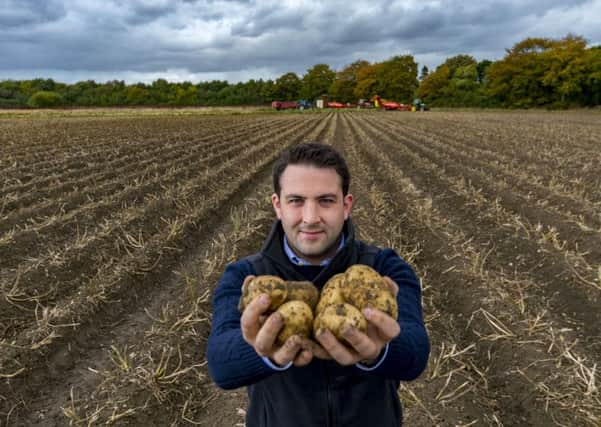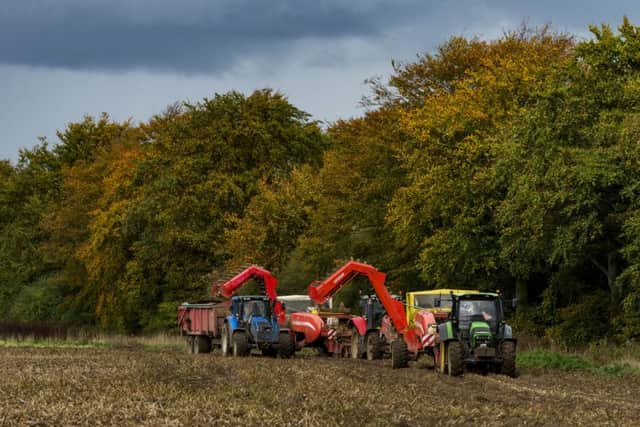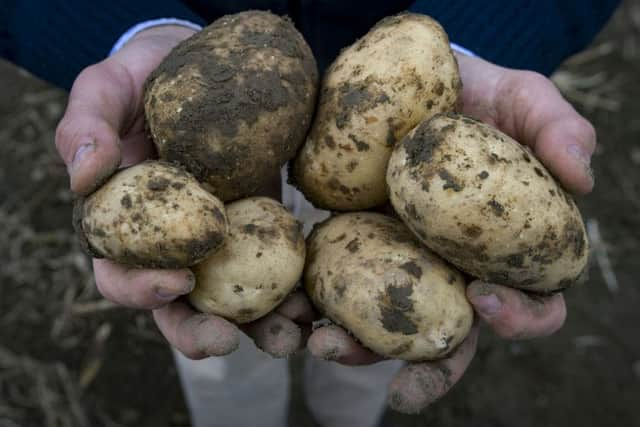Soil secrets of versatile crop with so many varieties


James Hopwood, agricultural director of Ibboston Produce in Colton near Tadcaster believes that the knight of the realm and the huge food and farming sector that sees plates adorned with boiled, mashed, jacketed and roasted varieties, chips, crisps and wedges have a common thread.
“We are all looking at the power of marginal gain, that bit extra whether it’s an athlete improving their chance of winning a gold medal or in our case adding value to produce.
Advertisement
Hide AdAdvertisement
Hide Ad“Just as you would look at cyclists, runners, jumpers or swimmers and analyse where they can add what will make that difference the same is true in looking at each type of potato and the soil.”


This year’s potato harvest is now in full swing and earlier this week a couple of Tectron harvesters were in action in Holderness. As a measure of how important the annual potato crop is you would be lucky to get any loose change out of a million pounds if you contemplated buying the pair. Investment isn’t limited to massive machinery either. Considerable time and money is spent on research and analysis of what eventually becomes our ‘carbs’.
“As with sports teams it is vital to look at each individual unit whether that is the farmland, potato variety or geographical location. Every farm is different and every farming situation. The farmer’s number one asset is his soil. We break that down in terms of composition including the organic matter content and what we can do culturally rather than chemically to improve it and provide better root structure.”
James believes a return to organic matter in soil is one of the keys to greater marginal gain.
Advertisement
Hide AdAdvertisement
Hide Ad“Sixty and 70 years ago there were a lot more mixed farms. Their livestock were producing manure that was being put directly onto the fields that brought about greater nutrients to the soil. As farms have streamlined their activities by concentrating on specific sectors the benefits to the soil of those mixed farming operations have been reduced.


“Many farmers are now looking at cover crops such as grasses and legumes that are classed as green manures in order to manage soil quality. These are particularly useful in dealing with pests and diseases. We are currently finding that radishes emit a gaseous vapour into the soil that helps to control pests.”
The Yorkshire potato harvest season runs from September until the end of October. James is relatively satisfied with the results.
“We’re getting a good view on the crop around now and the general quality of what is coming into the stores looks okay although the overall yield may be slightly back on the average. Potato varieties are a complicated mix compared to other commodities. They all have different yield aspirations and they all need individual care and attention.”
Advertisement
Hide AdAdvertisement
Hide AdJames works closely with Ibbotson Produce growers and as an agri-business consultant to East Riding-based Wholecrop Marketing. There are synergies and links between the two companies and James believes the awareness of the whole supply chain from growers to end users is another important ingredient in making further marginal gains.


Ibbotson Produce has the marketing rights to root crops including potatoes, carrots and parsnips for the Deliciouslyorkshire brand and Wholecrop Marketing has a significant involvement with the supply of crisping potatoes for KP Crisps who produce McCoy’s. Once again James has to consider specifics married to each contract.
“What people don’t often understand is that potatoes once harvested are living little things. A potato is still living all the way through to being processed into whatever it is destined for whether that end goal is on a supermarket shelf, within McCain’s chipping facility, McCoy’s crisp factory, or in an oven or microwave.
“We have to be aware of how well potatoes will perform while in storage and that means ensuring their training procedure (what happens in the field and what happens when harvested) is tailor made. Good storage potatoes are grown on land that is slightly heavier with better clay content. This brings about a tighter skin. Sandy soils tend to be abrasive and can damage the skin, which then reduces the length of storage time.
Advertisement
Hide AdAdvertisement
Hide Ad“The variety Lady Rosetta grown for McCoy’s is lifted from the field and delivered straight into their factory. Crisping potatoes are all about sugar balance. We want the sugars to be really low and the potatoes grown to produce nice, light crisps. If the sugar content is high this brings about darker crisps, which is why we monitor their sugar content all the way through the growing season. It’s much the same as monitoring the performance of a runner or cyclist and checking their levels are at the optimum.”


Marginal gains in any area of business and sport were previously referred to as going that one step further or pushing the boundaries. Whatever the current buzz phrase James believes the potato sector is trying its best to create the right conditions to sustain its market.